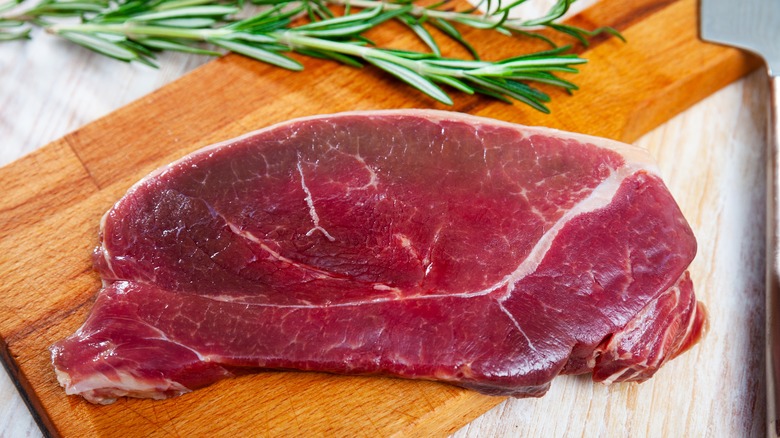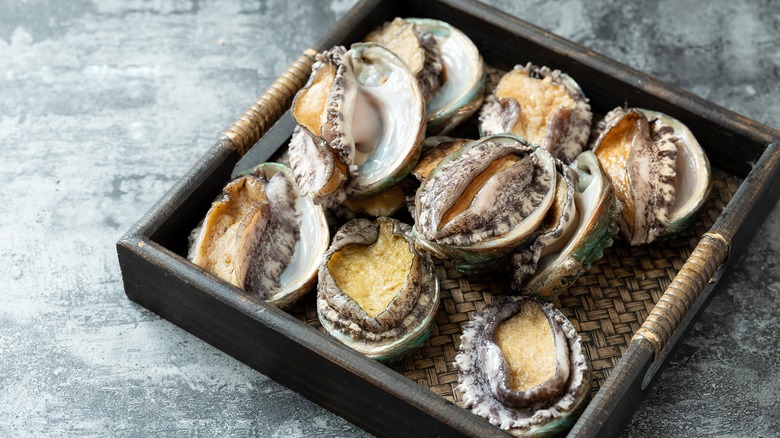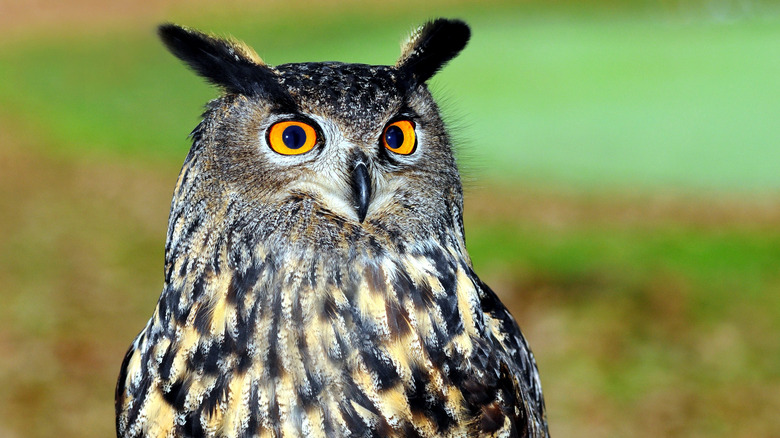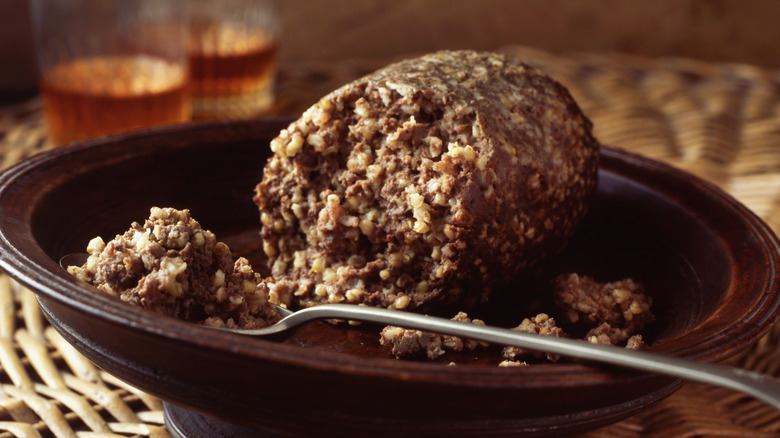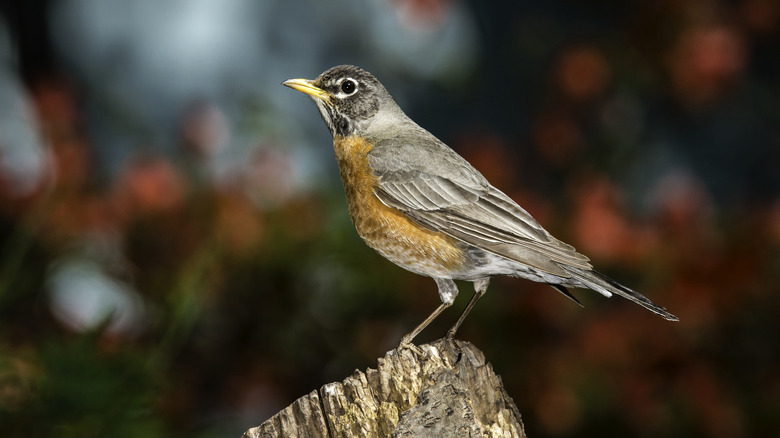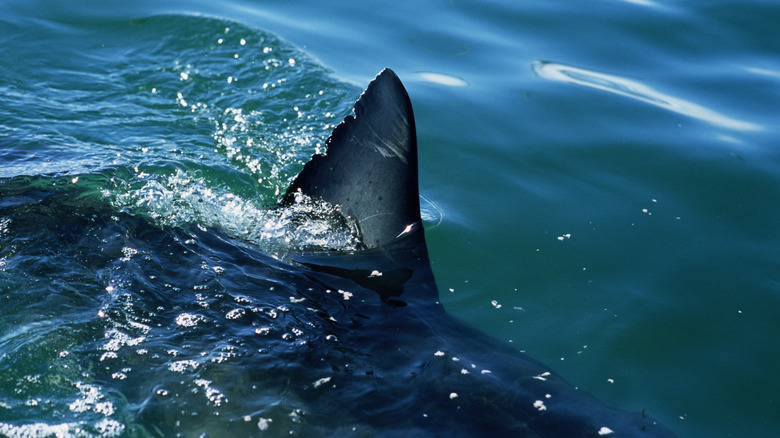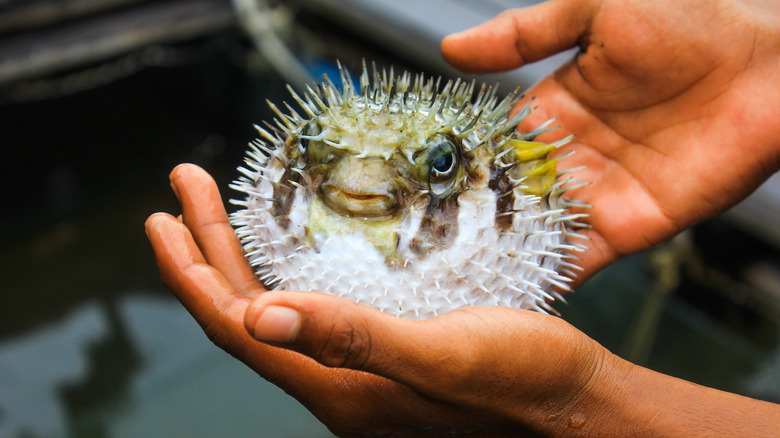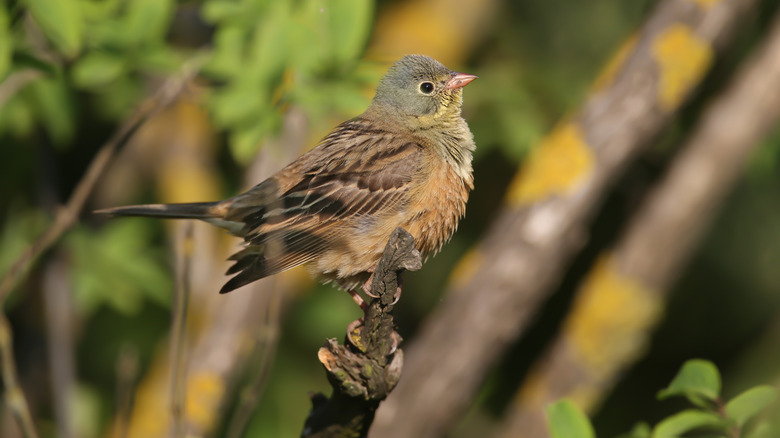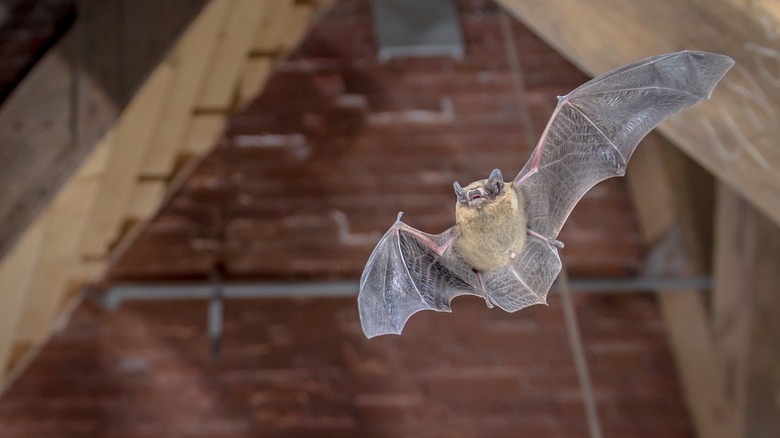13 Meats People Used To Eat, But Are Now Illegal In The US
Regardless of what stance you take on eating meat, the truth is people have been consuming it for a very long time. Archaeological evidence such as cut marks on fossilized animal bones tells us that humans have been eating meat for at least 2.4 million years. At first, it was likely fish, small animals, and scraps left over from other predators' kills. Then came hunting and butchering. When fire came into the picture, the first barbecues were born.
Over the centuries, humans have eaten pretty much any meat they could get their hands on. In modern times, we've become a bit more selective about the foods we eat. In fact, many meats that were popular in the past are now outright illegal in the United States. Most laws banning specific meats are meant to either protect certain species or protect us against foodborne illnesses.
The next time you're tucking into a perfectly grilled New York strip steak or a roast chicken, take a minute to consider that not so long ago that protein could have been turtle, dog, or owl meat. Interested to know what other animals people used to eat that are forbidden today? Read on to discover some surprising meats that are illegal to sell or serve as food in the U.S.
1. Horse meat
If you were born and raised in the U.S., you might be shocked to hear that horse meat is actually quite popular in several other countries. Travel to France, Russia, Japan, or Italy, and you can find horse meat in butcher shops and at restaurants. You can even find it north of the border in Canada's French-speaking province of Quebec and some spots in Toronto.
Also called chevaline, horse meat is lean, is high in essential fatty acids, and has almost double the iron of beef. Some say horse meat tastes exactly like beef, while others say it's slightly sweeter. There's only one way to find out for yourself. However, if you're American, that will involve a trip out of the country.
Horse meat has always been a sticky topic in the United States. It never really took off as a dish suitable for the dinner table, although slaughterhouses used to process horse meat for international markets. That all changed in 2007 when Congress stopped funding U.S. Department of Agriculture inspections of horse slaughterhouses. Without those inspections, the slaughterhouses were pretty much defunct. While eating horse meat isn't a federal crime, several states have passed laws banning the sale of horse meat for human consumption.
2. Wild abalone
What exactly is abalone and how do you eat it? Those are good questions considering it's pretty hard to come by abalone in the United States. Abalone is a gastropod mollusk, aka a sea snail. It lives along the coastlines of Australia, New Zealand, Japan, South Africa, and western North America. It has a flat shell with a spiral pattern on the outside and a shimmering pearl-like coating on the inside. However, it's not the shell that makes abalone so popular. It's the buttery, briny meat that makes it such a sought-after and expensive delicacy.
There used to be millions of abalone along the coast of California. Archaeological sites show that native people were eating abalone as far back as 7,400 years ago. However, overfishing, disease, and environmental factors have pushed the mollusks to the brink of disaster in the United States. Of the eight species that are native to California, two have been listed as endangered. Since 1997, there has been a ban on commercial fishing for abalone. In 2017, sport fishing was also banned. Now the only abalone you'll find legally available in the United States is red abalone from certified aquaculture farms.
3. Owl meat
With their majestic wingspans and luminous eyes that seem as though they can look into a person's soul, owls have been prominent figures in folklore and myths. Yet, despite people's fascination with them, these unique birds still managed to find their way into cooking pots in North America. Some native tribes once boiled and roasted them. Ornithologist John James Audubon's writings in "Birds of America" from the first half of the 1800s reported that owls were also used in some gumbo recipes in Louisiana.
Today, you could face a hefty fine and jail time for capturing, killing, trading, transporting, or selling an owl. That's thanks to the Migratory Bird Treaty Act of 1918, which was created to protect birds that are native to the United States. Although only some owls are migratory, all species are protected under the act. That includes the birds, eggs, and nests. In fact, it's even illegal to possess an owl feather in the United States without a special permit for scientific research or a native religious ceremony. The U.S. Fish & Wildlife Service states that the law "extends to all feathers, regardless of how they were obtained."
4. Sea turtle meat
It would be a vast understatement to say that turtle meat was once popular in the United States. From the time of the founding fathers onward, turtle soup was a highly sought-after delicacy. It was a favorite among presidents such as George Washington and Howard Taft and a staple at fine dining restaurants. People would often throw "turtle frolics" to enjoy the dish en masse, and recipes for the soup were everywhere. Turtle meat was also one of the foods eaten during the Great Depression, with some even calling it "Hoover chicken" in honor of President Herbert Hoover.
Not surprisingly, the popularity of turtle meat led to a rapid decline in turtle populations across the United States. The Endangered Species Act was signed into law in 1973, and it wasn't long before several turtle species made their way onto the list. Today, it is a federal crime to consume any type of sea turtle meat or eggs. In some states, it is also illegal to eat terrapin meat, which used to be the key ingredient in turtle soup. Not all turtle meat is prohibited, though. If you're dying to know what the turtle hype was all about, you can find dishes made with snapping turtle meat in some parts of the United States.
5. Any type of animal lungs
Offal tends to get a bad rap in the United States, but most of it is perfectly legal to sell and eat. If you're so inclined, you can gorge yourself on liver, tripe, heart, and kidneys. The only organ meat that you can't get at the butcher shop is lung meat. The U.S. Department of Agriculture banned sales of lung meat for human food back in 1971 with the reasoning that contaminants animals breathe in can get lodged in the lungs. Opponents argue that many other cultures eat lung meat and don't have issues.
The U.S. ban on lung meat also extends to dishes that contain lungs. That means haggis is banned in the United States. For those who aren't familiar with Scotland's national dish, it consists of a sheep's stomach stuffed with a mixture of lungs, heart, liver, onions, oats, suet, and spices. It may sound off-putting to outsiders, but many say you shouldn't knock it until you've tried it. Unfortunately, you can't have the real deal stateside. Other lung dishes that you can't have without swapping out the lungs for something else include Austrian beuschel (lung stew), Greek kokoretsi (offal sausage), and Chinese "husband and wife" lung slices.
6. Robin meat
When you see a robin today, you probably just see a pretty songbird with a brilliant red chest. However, the early European settlers in America saw robins as tasty treats. The National Resources Council of Maine came across a book called "The Market Assistant" from 1867 that said robins were abundant at markets in the East, especially in the fall months when the birds were "fat and delicate eating." NPR published an excerpt from an 1890 cookbook titled "Wehman's Cook Book" that outlined how to make robin pie with 10 to 12 robins rolled in flour and cooked with bacon, beef, and broth.
It's not surprising that robin meat was commonly consumed in the past. After all, the birds are abundant across North America. Yet, despite their ubiquity, you could get in a lot of trouble today for hunting and eating them. Robins are another species protected by the Migratory Bird Treaty Act of 1918, which means you can't hunt, capture, trade, or sell them. You can't lethally control them either, so even if they're destroying your fruit and vegetable patches, that robin pie will have to remain nothing more than a threat.
7. Whale meat
Whale meat is a controversial topic not just in the United States, but also around the globe. Native people in countries like Norway, Japan, Iceland, Canada, and the northern United States have long histories of hunting whales for food. In fact, the first time the pilgrims from the Mayflower encountered Native Americans, the latter were butchering a whale. Europeans also hunted whales, but primarily for the oil and the money that came with it. To many early colonists, whale meat was simply not a sought-after delicacy.
As the demand for whale oil grew, the whaling industry reached a fever pitch in North America. By the early 1900s, many whale species were nearing extinction. In 1947, the International Whaling Commission (IWC) was formed to regulate whale hunting. It set restrictions on hunting certain types of endangered whales like humpbacks, grays, and right whales. In 1986, the IWC put a moratorium on commercial whale hunting. Today, it is illegal to sell whale meat in the United States. The only exception is for Native people, but even then there are some restrictions.
8. Dog meat
For many of us, dogs are companions. They may also be hunting buddies, service animals, or fully fledged members of the family. Few would dream of cooking up their furry friend. However, there are a handful of countries around the world where dog meat isn't taboo. According to the Humane Society International, the dog meat trade is widespread in China, Vietnam, and Cambodia, among others. There are also records of people eating dog meat in North America.
In 2011, a team of scientists published a paper in the American Journal of Physical Anthropology suggesting they had found the first direct evidence of humans eating dogs in the New World. It came from 9,260-year-old human feces that contained a dog bone. Rumor has it that Lewis and Clark resorted to eating dogs after a grueling journey through the Rocky Mountains. Some tribes and settlers have also resorted to dog meat in times of scarcity.
It wasn't until 2018 that Congress passed the Dog and Cat Meat Trade Prohibition Act, which bans people from knowingly killing dogs or cats for human consumption. The bill also makes it illegal to knowingly buy, sell, donate, own, or transport a dog or cat to be slaughtered for food.
9. Shark fins
Considered a delicacy in many Asian cultures, shark fin soup is a dish that is made with the fibrous material from the inside of a shark fin. It may not sound appetizing, but for many, it's considered the epitome of luxury dishes. It's not very common to see shark fin on menus in the United States, but if you do, it's one of those foods you should think twice about ordering at a fancy restaurant. That's because the sale of shark fins is illegal in some states. In addition, the practice of finning is illegal in U.S. waters.
Finning is the practice of slicing the fins off a shark and throwing the body back in the water. Bleeding profusely and unable to navigate through the water properly, the shark will inevitably die. Shark finning is not only cruel but also one of the main reasons shark populations are rapidly shrinking around the world. Congress passed the Shark Finning Prohibition Act in 2000, stating that all fishermen must bring sharks back to shore with their fins intact. Some states like California, Hawaii, and New York have taken things one step further by banning the sale of shark fins altogether.
10. Loon meat
If you've ever heard the haunting call of a loon echoing off the waters of a still lake, it's easy to see why the bird is often called the "spirit of the north." These aquatic avians were also a source of meat for Native Americans. Hunters would use spears and arrows to hunt loons or even pluck the birds right out of the water with their bare hands. The loons were often roasted, broiled, or boiled, and sometimes the meat was dried. People also ate loon eggs.
Luckily for loons, they're now a protected species. As per the Migratory Bird Treaty Act of 1918, it's illegal to hunt loons or sell their meat. It may be good thing for us as well that loon meat isn't on any menus in the U.S., as many say the meat is pretty unappetizing. In "Birds of America," John James Audubon wrote, "The flesh of the loon is not very palatable, being tough, rank, and dark colored." That may not be surprising considering loons eat mostly fish, frogs, and insects.
11. Puffer fish
Puffer fish is the stuff of culinary legends. Also called fugu, blowfish, or swellfish, this inflatable fish is considered a delicacy for its mild, slightly sweet taste and the risk involved with eating it. You see, puffer fish contains a potentially lethal toxin called tetrodotoxin. The toxin is found in the intestines, liver, gonads, and skin, so the fish needs to be filleted very carefully in order not to contaminate the flesh. One bad bite could cause dizziness, speech impediments, tingling extremities, and even respiratory paralysis resulting in death.
Tetrodotoxin is the main reason you'll have a hard time finding fugu in the U.S. Some states, like Florida, ban commercial and recreational fishing of puffer fish. There are also strict regulations on importing the fish into the country. The U.S. Food and Drug Administration states that pufferfish can only be imported to the U.S. by a company called Wako International, which gets the fish from facilities licensed by the Japanese government. Individuals are prohibited from importing puffer fish for personal or commercial purposes. If you want to take your chances with fugu, you may have to travel outside the U.S. to find it.
12. Ortolan meat
At first glance, the ortolan doesn't look like it would make for a rich and indulgent meal. The small songbird only weighs about an ounce and looks like a pretty generic bunting or finch. However, this tiny bird has become an illicit French delicacy that celebrity chefs, gourmands, and even politicians sing praises about. It's a luxury dish that's steeped in ritual and controversy.
The traditional method of preparing ortolan is to force feed the birds grains and fruit until they're plump, then drown them in a type of brandy called Armagnac, pluck them, and roast them. Diners are meant to place a napkin over their head to make it easier to breathe in the aromas and then eat the bird whole. French chef Michel Guérard told The New York Times, "To eat the flesh, the fat, and its little bones hot, all together, is like being taken to another dimension."
Sadly, the demand for this somewhat bizarre dish caused ortolan populations to plummet. The birds are now classified as an endangered species and are therefore illegal to hunt in Europe and the United States. Chefs may push to have them returned to menus, but for the time being, they're legally and literally off the table.
13. Bat meat
You can find bats in nearly every corner of the globe save for a few extreme environments. These flying mammals may not seem like they'd make an enticing meal, but bat meat is considered a delicacy in many countries. For example, fruit bat soup is popular in Indonesia, Palau, and other parts of Micronesia. Adventurous eaters who want to try bat meat will have to travel outside the United States, though, because many bat species are federally protected under the Endangered Species Act (ESA) of 1973 and the Fish and Wildlife Act of 1956.
Bats also fall under the category of bushmeat, which is illegal to import into the United States. Bushmeat comes from wild animals like bats, apes, monkeys, and rodents. According to the Centers for Disease Control and Prevention, these meats can carry communicable diseases including the deadly Ebola virus. For that reason, any bushmeat found at U.S. ports will be seized, and importers may face fines of up to $250,000. Even native bats can carry diseases like rabies, so they're not exactly the ideal protein for your next dinner party.

